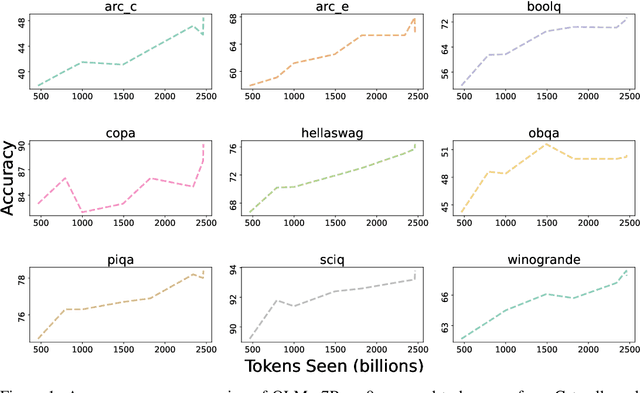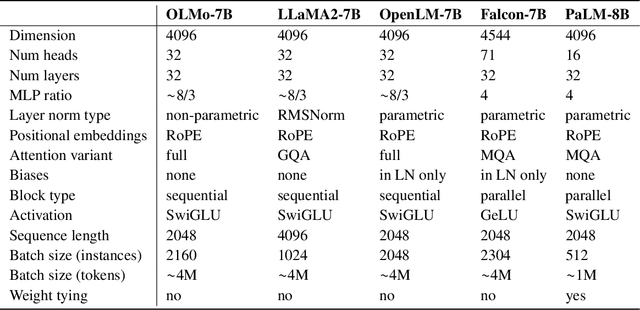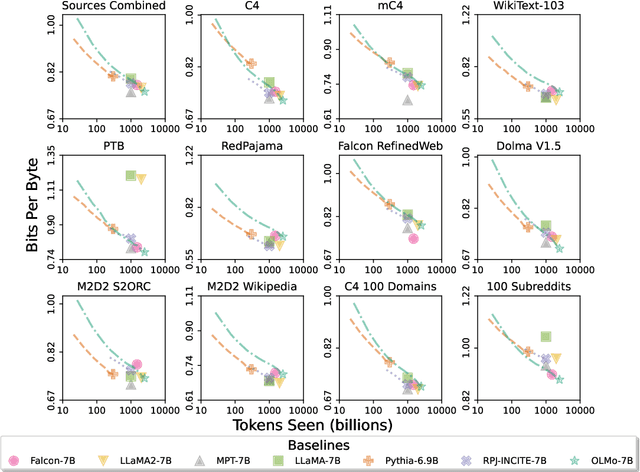Jennifer Dumas
OLMo: Accelerating the Science of Language Models
Feb 07, 2024



Abstract:Language models (LMs) have become ubiquitous in both NLP research and in commercial product offerings. As their commercial importance has surged, the most powerful models have become closed off, gated behind proprietary interfaces, with important details of their training data, architectures, and development undisclosed. Given the importance of these details in scientifically studying these models, including their biases and potential risks, we believe it is essential for the research community to have access to powerful, truly open LMs. To this end, this technical report details the first release of OLMo, a state-of-the-art, truly Open Language Model and its framework to build and study the science of language modeling. Unlike most prior efforts that have only released model weights and inference code, we release OLMo and the whole framework, including training data and training and evaluation code. We hope this release will empower and strengthen the open research community and inspire a new wave of innovation.
Dolma: an Open Corpus of Three Trillion Tokens for Language Model Pretraining Research
Jan 31, 2024



Abstract:Language models have become a critical technology to tackling a wide range of natural language processing tasks, yet many details about how the best-performing language models were developed are not reported. In particular, information about their pretraining corpora is seldom discussed: commercial language models rarely provide any information about their data; even open models rarely release datasets they are trained on, or an exact recipe to reproduce them. As a result, it is challenging to conduct certain threads of language modeling research, such as understanding how training data impacts model capabilities and shapes their limitations. To facilitate open research on language model pretraining, we release Dolma, a three trillion tokens English corpus, built from a diverse mixture of web content, scientific papers, code, public-domain books, social media, and encyclopedic materials. In addition, we open source our data curation toolkit to enable further experimentation and reproduction of our work. In this report, we document Dolma, including its design principles, details about its construction, and a summary of its contents. We interleave this report with analyses and experimental results from training language models on intermediate states of Dolma to share what we have learned about important data curation practices, including the role of content or quality filters, deduplication, and multi-source mixing. Dolma has been used to train OLMo, a state-of-the-art, open language model and framework designed to build and study the science of language modeling.
 Add to Chrome
Add to Chrome Add to Firefox
Add to Firefox Add to Edge
Add to Edge